
|
|
|
|
|
 |
|
|
|
|
|
|
|
|
|
|
|
|

|
|
During the past five million years, two-legged humans evolved from four-legged apes. I want to know how that happened and how our early ancestors lived. To find out, I have done extensive research on the comparative anatomy of humans, apes, and monkeys. From reading earlier works on human evolution, one might get the impression that only male primates evolved. As a woman, I was interested in the role females played in this story, and I have written a great deal on the subject. In the evolution of any species, the course of development of the individual from a single cell to an infant, to a juvenile and an adult is vital to understanding its adaptation and survival. Therefore, the study of immature individuals is as important as the study of adults. My goal has been to flesh out the emergence of our species as a dominant force on this planet, using the many scientific tools and concepts now available, not neglecting the human mind as both a creator and a spectator of this ongoing drama. |
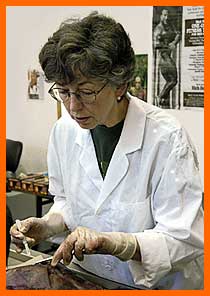
Adrienne Zihlman |
|
Original Thinkers The Role of Women in Evolution |
| CURRENT RESEARCH |
| I am currently collaborating with anatomist and artist, Carol Underwood, on an ape anatomy book. This very exciting project integrates 30 years of labratory research with ongoing dissection, data collection and analysis. The book will offer an evolutionary approach with emphasis on function and adaptation. Topics include species comparisons, sexual dimorphism, body proportion, tissue composition, and growth and development. Multiple levels of anatomical detail will be analyzed and illustrated to convey patterns -- similarities and differences -- among and between ape species. The book will synthesize and extend our knowledge of apes as a link between both monkeys and humans. |
 |
Great Ape Variation
Our study of ape anatomy through quantitative dissection draws on methods developed by Ted Grand and focuses on documenting age and sex differences in body composition and proportions. We test hypotheses on the degree of variation existing within a species (that is age and sex differences) and then document the variation among the species. It appears that each species -- gorillas, orangutans, pygmy chimpanzess, and common chimpanzees -- is distinct in body proportions and muscle groups. As in all our research, we go beyond the skeleton to include soft tissue and thus get a more detailed understanding of the similarities the apes share, but how they diverge as part of the specific adaptation of each species. These studies provide the foundation for interpreting anatomical adaptations in ape and human evolution.
From: Zihlman, AZ, McFarland, RK. 2000. Body mass in lowland gorillas: A quantitative analysis. Am. J. Phys. Anthrop. 113:61-78.
|
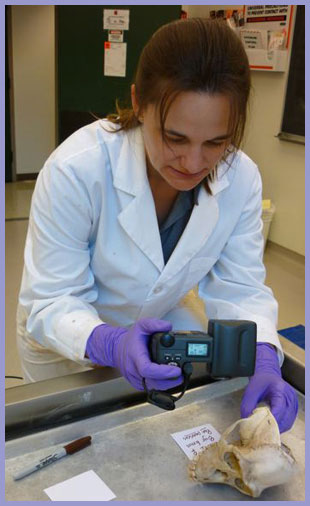 |
Growth and Development
Through the process of growth and development an infant is transformed into an adult. We are analyzing those changes through the study of timing and order of dental development, joint fusion, and bone growth. When cadaver material is available, we also investigate body composition shifts from infants, to juveniles to adults, and how the changes connect with an individual's locomotion and adaptations at different ages. These studies provide unique developmental 'fingerprints' for each species. Debra Bolter, Modesto College, collaborates on this research. |
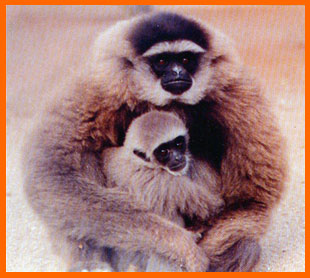 |
Gibbon Anatomy
Gibbons are the smallest of the apes, consist of 4 Asian genera and over a dozen species, and are known for their agility and grace as they swing through the trees. Virtually nothing is known about the morphological variation that may or may not exist among the genera. Our study test hypotheses on the degree of body proportion differences among the four genera, and links these subtle variations to each group's particular forest adaptation. Alan Mootnick's, Gibbon Conservation Center, contributes to this project. Hylobates moloch (Javan gibon) adult female "Chloe" and 6-month old male "Reg". Gibbon Conservation Center, photo by Alan Mootnick. |
| RESEARCH BEGINS IN THE LAB.
Our laboratory facilities accommodate large research teams. Colleagues, visiting scholars, and students of Physical Anthropology, Anatomy, Biology, and Medicine have joined us over the years for unique opportunities to study primate anatomy. |
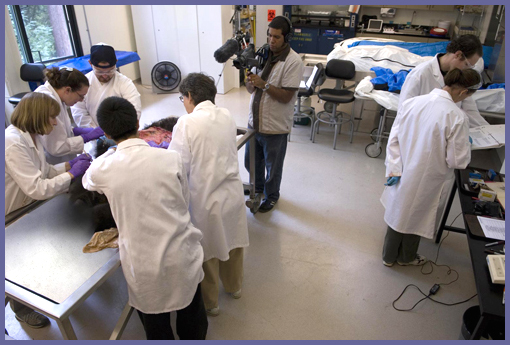
Photo credit: Toshiro Tanaka |
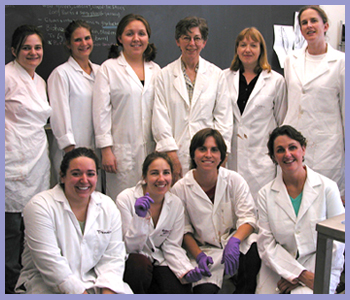
|
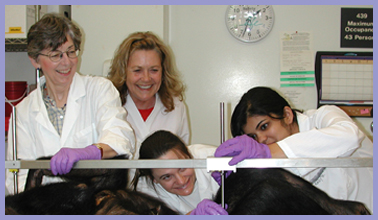
|  Photo credit: Toshiro Tanaka |
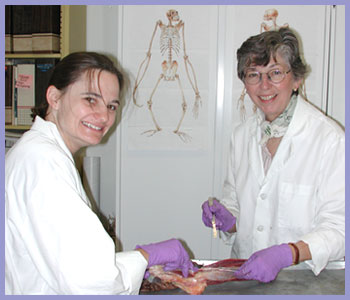
|
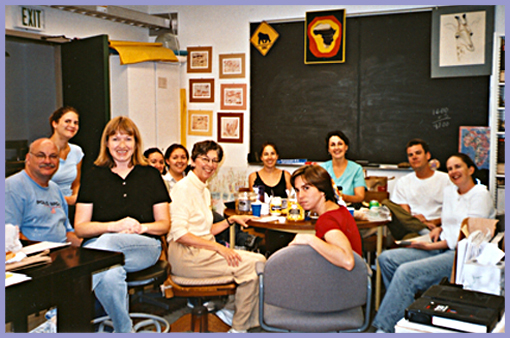 |
| The team refuels. |
|
HOME
COURSES
RESEARCH
PUBLICATIONS
BIOGRAPHY
CONTACT
|